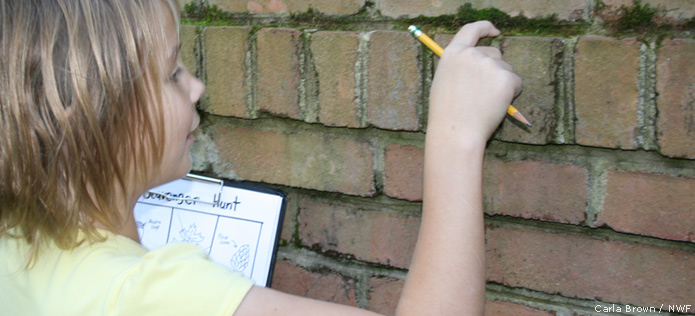
Create a list of natural items appropriate for the season and location, and see how many your children can find.
What You Need
- Bucket or bag to hold the found objects
- Pencil or crayon
- Scavenger hunt list
- Camera (optional)
What You Do
- Print out your scavenger hunt list.
You are most familiar with the natural items in your backyard, so you might want to make your own scavenger hunt list. But if you check out our backyard scavenger hunt list in case it works for you.
Backyard Scavenger Hunt with drawings (best for small children)
Backyard Scavenger Hunt list only

- Put your checklist on a clipboard.
If you attach the pencil or crayon by a string, that makes it easier for the person seeking the objects.
Give each person a bag or bucket to hold their found objects.
- Put qualifications on your scavenger hunt objects such as length.
This makes it more challenging and fun. You can send your scavenger hunters out with a measuring tape or ruler, or you can have them measure it against their body. For example, “find a blade of grass longer than your longest finger.”
- Ask for signs of wildlife rather than actual wildlife.
Most scavenger hunts take place during the day, when most wildlife are hiding. You can still have your participants look for signs of wildlife, such as nibbles on a nut, scat or wildlife homes.
- Customize your scavenger hunt list to your surroundings.
Especially for younger children who will tire quicker, do a quick run through with your scavenger hunt list to see if these items can be found easily in your location. Be sure to add some easy finds, such as “moss on a building,” to keep everyone’s energy going.
